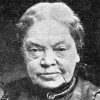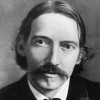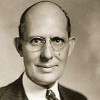Virtuous love consists in decorous desire for the beautiful.
[Δίκαιος ἔρως ἀνυβρίστως ἐφίεσθαι τῶν καλῶν]
Democritus (c. 460 BC - c. 370 BC) Greek philosopher
Frag. 73 (Diels) [tr. Freeman (1948)]
(Source)
Diels citation "73. (87 N.) DEMOKRATES. 38."; collected in Joannes Stobaeus (Stobaios) Anthologium III, 5, 23. Freeman notes this as one of the Gnômae, from a collection called "Maxims of Democratês," but because Stobaeus quotes many of these as "Maxims of Democritus," they are generally attributed to the latter. Alternate translations:
- "Rightful love is longing without violence for the noble." [tr. Barnes (1987)]
- "Just lust is longing for noble things without arrogance." [tr. @sententiq (2018)]
Quotations about:
correct
Note not all quotations have been tagged, so Search may find additional quotes on this topic.
Even a stopped clock is right twice every day. After some years, it can boast of a long series of successes.
[Die still stehende Uhr, die täglich zwei Mal die richtige Zeit angezeigt hat, blickt nach Jahren auf eine lange Reihe von Erfolgen zurück.]
Maturity begins when we’re content to feel we’re right about something without feeling the necessity to prove someone else wrong.
Sydney J. Harris (1917-1986) Anglo-American columnist, journalist, author
(Attributed)
Frequently attributed to Harris, but the original source has not been found. Earliest citation I could find was in Reader's Digest (1973), where it is further credited to the Publishers-Hall Syndicate.
It is the mark of a good action that it appears inevitable in retrospect.
Robert Louis Stevenson (1850-1894) Scottish essayist, novelist, poet
“Reflections and Remarks on Human Life,” #6 (1878)
(Source)
One lesson the arts teach is that there can be more than one answer to a question and more than one solution to a problem; variability of outcome is okay. […] The arts teach children that their personal signature is important and that answers to questions and solutions to problems need not be identical. There is, in the arts, more than one interpretation to a musical score, more than one way to describe a painting or a sculpture, more than one appropriate form for a dance performance, more than one meaning for a poetic rendering of a person or a situation. In the arts diversity and variability are made central. That is one lesson that education can learn from the arts.
Elliot Eisner (1933-2014) Academic, researcher, professor of art and education
The Arts and the Creation of Mind, ch. 8 (2002)
(Source)
Variant: "The arts teach children that problems can have more than one solution; questions can have more than one answer. If they do anything, the arts embrace diversity of outcome."
This hitteth the naile on the hed.
John Heywood (1497?-1580?) English playwright and epigrammist
Proverbes, Part 2, ch. 11 (1546)
(Source)








